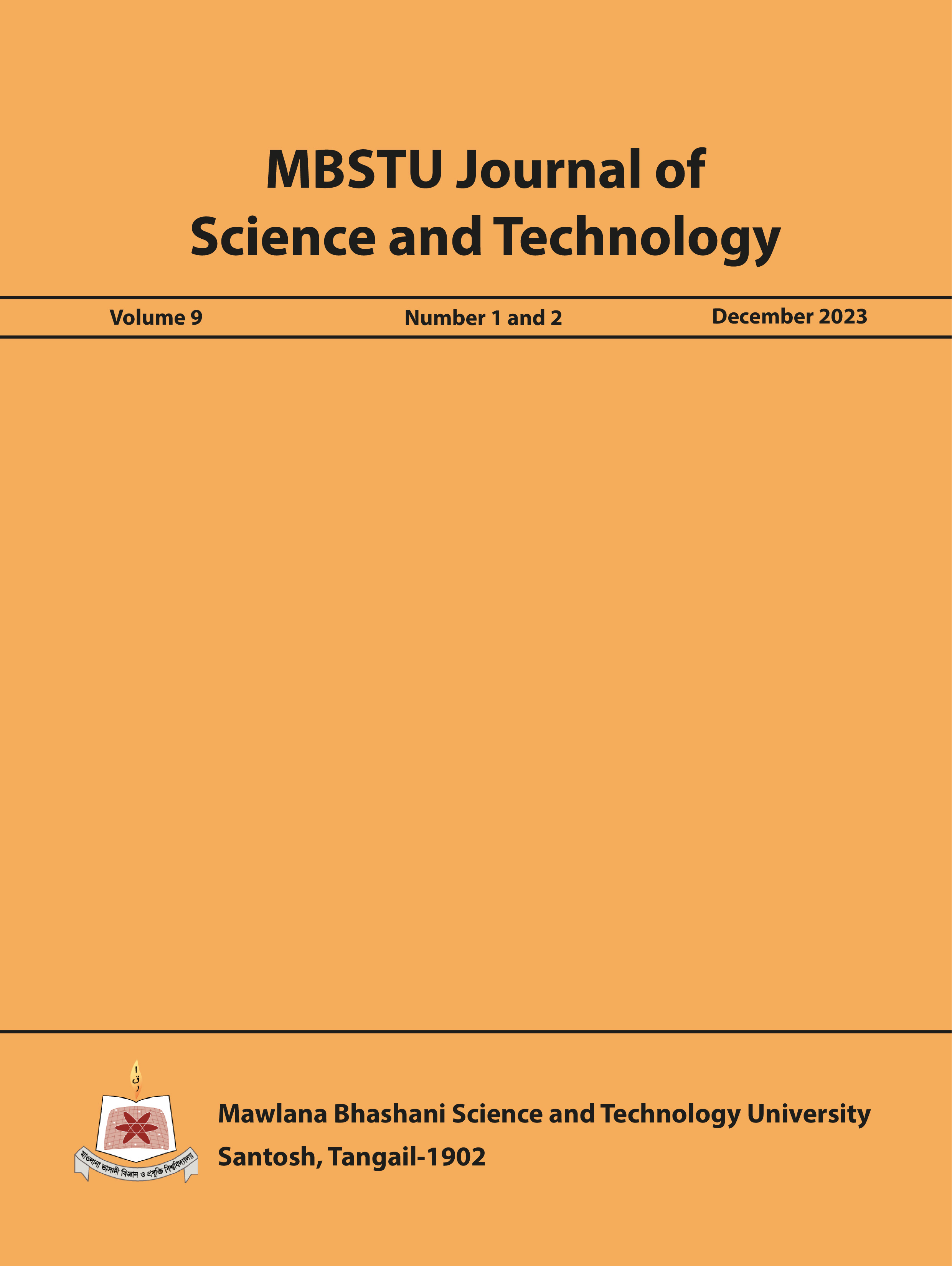Health Facilities and Safety Issues of Female Garments Workers: A Study at Savar Area, Dhaka
DOI:
https://doi.org/10.69728/jst.v9.17Keywords:
Garment Industry, Female Workers, Safety Hazards, Harassment and Health CareAbstract
As most of the female workers in Bangladesh tend to low educational qualification due to drop out from school in early-stage to support their families and they have a lack of awareness about health and safety issues especially many of those workers still do not get pregnancy care although it is the prime concern for women. They are very often harassed by co-workers in the factory and face social trolls due to work in the garments. This study aims to investigate the health care facilities and safety hazards of female workers in the garments industry in Bangladesh. Primary data are collected (female workers) from different garments at Savar area through the questionnaire survey method. In this study, descriptive statistics, contingency analysis, and binary logistic analysis are used to examine the factors’ effect on female workers’ social situation and health facilities. Results reveal that about 93.6% of females have come from the village and a large number (43.9%) is a young adult (25-34 years). About 32.8% female has trolled socially due to work in the garments. Contingency analysis has been revealed that educational status, family types, educational status of the husband, occupation of husband, reason of job, spend income in own way, social status for doing the job, inequality in higher rank and reason of dropout from a job have a significant association with the social troll of the female garments worker. From the binary logistic regression analysis, it has been found that family types, husband education, and occupation, reason of job, spend income in own way, inequality in higher rank and dropout from a job have a significant effect on social troll of the female garments worker. Garments authority and the government should take effective programs and enforce labor law for improving health facilities and safety issues in Bangladesh for female workers.
References
Akhter, S., Salahuddin, A. F. M., Iqbal, M., Malek, A. B. M. A., & Jahan, N. (2010). Health and occupational safety for female workforce of garment industries in Bangladesh. Journal of Mechanical Engineering, 41(1), 65-70.
Attanapola, C. T. (2004). Changing gender roles and health impacts among female workers in export-processing industries in Sri Lanka. Social science & medicine, 58(11), 2301-2312.
Akterujjaman, S. M., & Ahmad, M. H. (2016). Workers’ Satisfaction toward RMG Industry in Bangladesh: A Study on Dhaka and Gazipur City. International Journal of Research in Management & Business Studies, 3(2), 22-30.
Gupta, R. D., Nag, S., Datta, D., Roy, S., Das, S., & Aziz, S. M. Y. (2015). Occupational health hazards among workers in garment factories in Bangladesh: A cross-sectional study. Occupational Health, 5(5), 90-98.
Islam, N., Afrin, S., Tasnim, T., Biswas, M., & Shahriar, T. (2018). Application of Labor Laws and Other Compliances in Readymade Garment Industry of Bangladesh. August 21.
Islam, N., Ghosh, S. K., Islam, A., Salam, N. M. M., Khosru, T., & Masud, A. A. (2017). Working Conditions and Lives of Female Readymade Garment Workers in Bangladesh. Proceedings of the 23rd IAMB Conference, New Orleans, Louisiana, USA, January 19-20.
Khosla, N. (2009). The ready-made garments industry in Bangladesh: A means to reducing gender-based social exclusion of women. Journal of International Women’s Studies, 11(1), 289-303.
Khan, N. R., Dipti, T. R., Ferdousi, S. K., Hossain, M. Z., Ferdousi, S., Sony, S. A., & Islam, M. S. (2015). Occupational Health Hazards among Workers of Garment Factories in Dhaka City, Bangladesh. Journal of Dhaka Medical College, 24(1), 36-43.
Mahmud, M. S., & Rajath, V. D. (2017). Safety issues of female workers of garment industry in Gazipur District, Bangladesh. Journal of Applied and Advanced Research, 2(4), 265-269.
Mahmud, S., Mahmud, R., & Jahan, M. N. (2018). Health Issues of Female Garment Workers: Evidence from Bangladesh. Journal of Population and Social Studies, 26(3), 181-194.
Naved, R., Rahman, T., Willan, S., Jewkes, R., & Gibbs, A. (2018). Female garment workers’ experiences of violence in their homes and workplaces in Bangladesh: A qualitative study. Social Science & Medicine, 196, 150-157.
Paul-Majumder, P., & Begum, A. (2000). The gender imbalances in the export oriented garment industry in Bangladesh. Washington, DC: World Bank, Development Research Group/Poverty Reduction and Economic Management Network.
Downloads
Published
Issue
Section
License
Copyright (c) 2023 Dilip Kumar Mondol, Farhana Akhter, Dhaneswar Chandro Sarkar (Author)

This work is licensed under a Creative Commons Attribution 4.0 International License.









